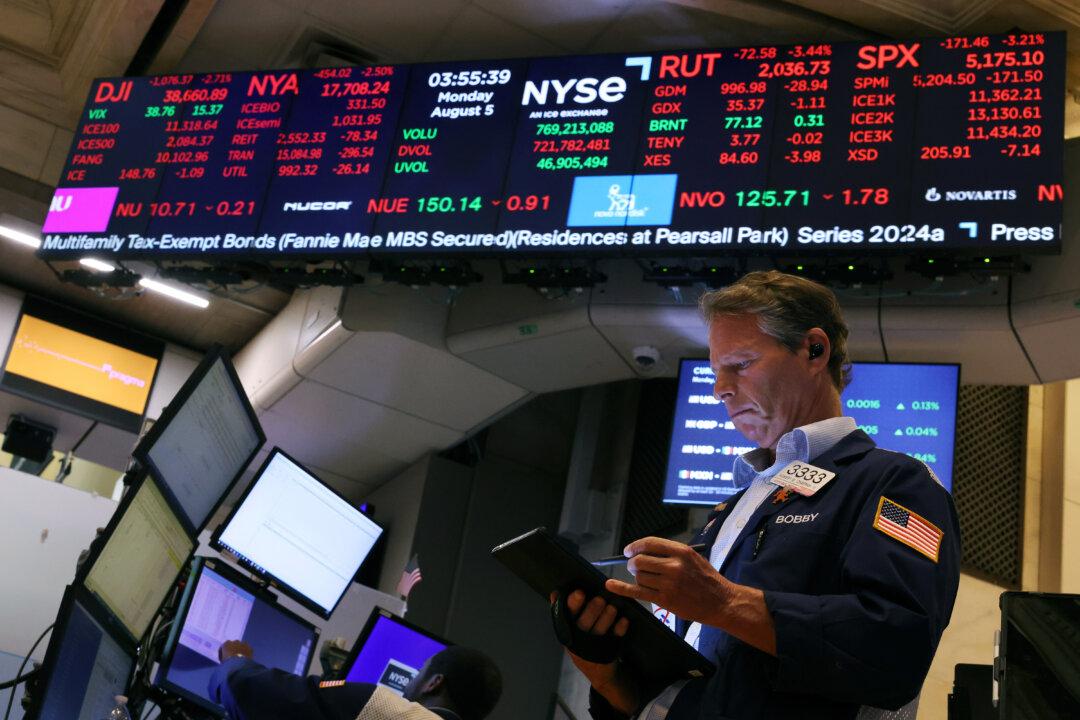Inflation in assets inevitably leads to bubbles bursting.
In the period when central banks were glad to see limited consumer price increases despite large increases in the money supply, they created massive inflation in assets. Throughout the quantitative easing era, bond prices spiked, equity valuations soared, house prices increased significantly above affordability levels, and multiples in private equity and venture capital rose to all-time highs.
Asset inflation preceded consumer price inflation, and it may be a major source of financial instability.
The Bloomberg U.S. house price index has slumped 20 percent since the beginning of monetary contraction, and the evidence of the burst of housing price inflation is a clear signal of capital destruction. Monetary contraction leads to a decline in asset prices that subsequently creates a reevaluation of the asset base in financial firms, from banks to venture capital firms.
The importance of capital destruction in the fight to curb inflation is often ignored. Economists tend to believe there’s little correlation between the prices of everyday goods and services and the valuation of financial assets, because many willingly reject the monetary cause of inflation, and rising valuations are also a monetary phenomenon.
In the same way that financial asset inflation precedes consumer prices in monetary expansion periods, capital destruction appears earlier than consumer price index inflation declines in monetary contraction times. Without significant writedowns in financial assets, it’s exceedingly difficult to see a true disinflationary process. Why? Because elevated valuations of financial assets lead to looser lending standards, complacent levels of credit growth, and rising consumer prices.
When central banks become the lender of first resort instead of the lender of last resort and switch their focus from inflation to “financial stability” in the form of keeping high asset prices (equities, bonds, and houses), then they also abandon the reduction of consumer prices as an objective. The role of central banks isn’t to keep equities, bonds, and house prices rising, let alone to prevent a natural and even healthy correction.
You may say that central banks don’t aim for rising financial asset prices, but the evidence supports the opposite argument. Central banks do care about markets because they believe in the wealth effect’s impact on the real economy. When people feel that their homes are more valuable and their stocks are worth more, they’re inclined to spend more and take more credit. This wealth effect is also proof of what I mentioned before: Financial asset prices lead the inflationary burst, and only capital destruction in those same asset prices can truly reduce the prices of goods and services.
The issue arises when central banks ignore excessive valuations in financial markets for an extended period of time. Once that situation arises and we live, as we did in 2020, in the “bubble of everything,” it becomes increasingly difficult to combat inflation without a financial market scare. The collapse of some regional banks in the United States is evidence of capital destruction. The asset base declines fast, deposits leave, and the unrealized capital loss is larger than the quoted market capitalization.
Central banks can’t engineer a soft landing for the economy when they created a large bubble that requires significant writedowns in most financial firms and a credit crunch with it.
The bubble of everything leads to the slump of everything, and capital destruction will be the leading indicator of disinflation.





